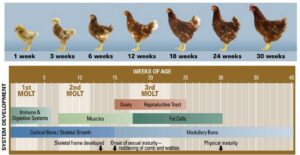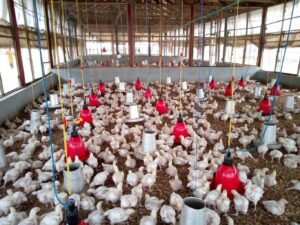Standards for animal and plant protein meals, also known as feed ingredients or feedstuffs, are established guidelines and specifications used in the feed industry to assess the quality, nutritional value, and safety of these products. These standards help ensure consistency, transparency, and compliance with regulatory requirements in the production, trade, and use of protein meals in animal feeds. While specific standards may vary depending on regional regulations and industry practices, here are some common parameters and criteria included in standards for animal and plant protein meals:
Thank you for reading. Don't forget to subscribe & share!
1. Protein Content:
Protein content is a critical parameter for assessing the nutritional value and suitability of protein meals for inclusion in animal feeds.
Standards specify minimum guaranteed levels of crude protein, expressed as a percentage of the dry matter basis, to meet the dietary requirements of target animal species.
2. Amino Acid Profile:
Amino acids are the building blocks of protein and play essential roles in animal growth, development, and performance.
Standards may include requirements for essential amino acids, such as lysine, methionine, and threonine, to ensure balanced amino acid nutrition in animal diets.
3. Moisture Content:
Moisture content affects the stability, shelf life, and microbial safety of protein meals during storage and handling.
Standards specify maximum allowable moisture levels to prevent spoilage, mold growth, and quality degradation in protein meals.
4. Fat Content:
Fat content contributes to the energy density and palatability of protein meals in animal feeds.
Standards may include limits on the maximum fat content to prevent rancidity, oxidation, and reduced feed intake in animals.
5. Ash Content:
Ash content represents the inorganic mineral content of protein meals, including essential minerals such as calcium, phosphorus, and trace elements.
Standards may specify acceptable levels of ash content to ensure mineral balance and nutritional adequacy in animal diets.
6. Fiber Content:
Fiber content influences digestibility, gut health, and nutrient utilization in animals.
Standards may include limits on fiber content, such as crude fiber or neutral detergent fiber (NDF), to optimize nutrient absorption and feed efficiency.
7. Contaminants and Toxins:
Standards establish maximum allowable levels of contaminants and toxins in protein meals to ensure product safety and animal health.
Common contaminants include heavy metals, pesticides, mycotoxins, and microbial pathogens, which can pose risks to animal health and food safety if present at elevated levels.
8. Processing and Quality Factors:
Standards may address additional quality factors related to processing methods, particle size, color, odor, and texture of protein meals.
Quality assurance programs and certification schemes may provide additional criteria for assessing product quality, consistency, and traceability.
Implementation and Compliance:
Standards for animal and plant protein meals are typically established by industry organizations, regulatory agencies, or international bodies such as the Association of American Feed Control Officials (AAFCO) or the European Feed Manufacturers’ Federation (FEFAC).
Feed manufacturers, suppliers, and traders use these standards to evaluate, procure, and formulate feeds containing protein meals, ensuring compliance with quality and safety requirements.
Regulatory agencies may enforce compliance with standards through inspections, sampling, testing, and certification programs to safeguard animal health, consumer confidence, and market integrity.
Importance:
Standards for animal and plant protein meals play a crucial role in ensuring the quality, safety, and nutritional integrity of animal feeds.
Compliance with standards helps maintain consistency, transparency, and trust in the feed industry, facilitating fair trade, competitive pricing, and responsible feed formulation practices.
Adherence to quality standards contributes to animal health and welfare, efficient production, and the production of safe and wholesome food products for human consumption.
By adhering to established standards and implementing robust quality assurance programs, feed manufacturers, suppliers, and regulatory agencies can effectively manage risk, ensure product quality, and uphold industry integrity in the production and use of animal and plant protein meals in animal feeds.









